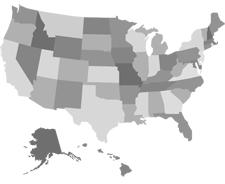Stretch Your Food Budget with These Healthy, Inexpensive Choices
If you are like most Americans, what you spend on food each month probably takes a big bite out of your overall budget. Food is a basic need for everyone so it's obvious that avoiding the supermarket altogether isn't a very practical solution to cutting back on your grocery spending. Plus the facts bear out that eating in restaurants (whether fine dining or fast-food) is almost always more expensive than preparing food at home. So how do you reel in the costs?There are many reasons that people spend so much of their monthly income on food. One reason is that the price of fresh produce, meats, poultry, and dairy products can be directly affected by weather and other natural disasters. Whenever there is a drought, or freeze, or excessive rainfall, you can expect food prices to go up. Transportation costs can also increase if there is a hike in the price of gasoline. All of these additional costs are generally passed on to consumers in the form of higher prices.
One key to bringing down your monthly food costs is to eliminate wasteful spending. Think about how much food you toss out every week either because it goes bad or no one wants to eat leftovers five nights in a row? Changing your shopping habits may take a little time but it's an important and necessary step in reducing what you spend.
With a bit of effort and planning on your part, you can easily learn to be a savvy grocery shopper. Plus you will begin to see the results (savings) almost immediately. Add up all the restaurant meals you eat every week (breakfast, lunch, AND dinner some days?). The dollar amount may shock you. If you took that same money (and armed yourself with a well-thought out list) you could probably go to the grocery store, buy what you actually need, and have enough food to last much longer than a week.
You can also save a lot of money by cutting back on processed and packaged foods. These types of food are usually high in sodium and sugar. When you prepare your meals at home you can control the ingredients and the portions which is a win-win situation in terms of nutrition and savings.
One additional note: it can be tempting to buy an enormous quantity of an item when it is on sale. But if you are buying tomatoes or other fresh produce, you need to be sure you can use it all before it spoils. Twelve pounds of tomatoes at a discounted price isn't much of a bargain if you end up throwing out ten pounds of them.
Healthy, but Inexpensive Foods
To help you get started on reducing your grocery bills, the following foods are great choices when it comes to price and nutritional value. If you have farmers' markets in your area, you can usually find fresh, delicious fruits and vegetables at reasonable prices. Many also offer meats, poultry, and cheeses as well as flowers, plants, and herbs.- Oatmeal. Do your health and pocketbook a favor and bypass the sugary, processed, expensive packaged cereals. Oatmeal is a delicious and nutritious whole-grain breakfast option which is packed with dietary fiber and has been shown to improve cardiovascular health and lower cholesterol. Plus a typical serving will only cost around 30 cents.
- Eggs. Eggs sometimes get a bad rap because of their cholesterol content but used in moderation, they can be an inexpensive and nutritious source of protein. They are also low in calories. Eggs can be scrambled for breakfast, used in a salad or to make a sandwich for lunch, or combined with fresh veggies to make a delicious frittata for dinner. The price of a dozen eggs varies but generally will cost around 10 to 15 cents per egg.
- Rice. Here's an interesting statistic: nearly half of the world's calorie intake comes from rice! Far and away, people consume more rice than any other grain. Unfortunately, processed rice loses much of its nutritional value. Brown rice retains the most nutrients while white rice loses the most. Even when white rice is enriched, brown rice still is better for you. The good news is that rice can be safely stored for up to two years so it is a perfect choice to buy in bulk. Twenty pounds of rice will usually cost less than 50 cents per pound. The cost per serving breaks down to around 3-4 cents.
- Potatoes. Potatoes are a vegetable which also suffer from negative press but in fact are a low-calorie source of fiber and other vitamins. The calories come when people load them up with cheese, bacon, butter, and sour cream. Try stuffing a baked potato with broccoli or other fresh vegetables. It makes a satisfying meal and is chocked full of nutrition. Potatoes which are bagged typically cost less than individual ones. A 10- pound bag of russet potatoes will usually cost between $4 and $5 making them a wonderful, inexpensive addition to your menus.
- Apples. The old adage "an apple a day keeps the doctor away" still holds true today. Apples are a great source of vitamins, fiber, and antioxidants. Apples make a terrific snack and are a superior choice to chips, cookies, and other processed items which are notoriously high in sugar and sodium. The peak harvest season (usually in autumn) is when you will find the best deals. Prices vary according to the variety of apple (Delicious, Fuji, Gala, etc) but generally apples cost about $2 per pound.
- Carrots. Carrots contain beta-carotene which is known to improve eye health. They are low in calories and also make an easy and delicious snack. All foods lose some of their potency when cooked so eating raw fruits and vegetables is always the ideal way to enjoy them. The cost of a bag of carrots is usually around a dollar per pound.
- Dried Beans. Whether you buy navy, garbanzo, pinto, or the Great Northern variety, dried beans are both an inexpensive and delicious choice. Dried beans are an excellent source of protein and have proven cholesterol-lowering properties. They can be used in salads, soups and stews and have a long shelf-life. A one pound bag of beans will generally cost around $1.00 making them one of the most economical foods you can buy.
When you look at this list, it's obvious that some food items are not included. Meat, poultry, and fish items typically cost more than fruits, vegetables, and grains. If you are seriously trying to cut your food budget, consider having a meatless dinner at least one or two nights a week. Not only will this benefit your health, it will also save you money.
Again, remember that you'll usually find the best price on specific foods when they are in season. The more you can buy locally, seasonally, and unprocessed, the more money you will save.
State Guides
- Alabama
- Alaska
- Arizona
- Arkansas
- California
- Colorado
- Connecticut
- Delaware
- District of Columbia
- Florida
- Georgia
- Hawaii
- Idaho
- Illinois
- Indiana
- Iowa
- Kansas
- Kentucky
- Louisiana
- Maine
- Maryland
- Massachusetts
- Michigan
- Minnesota
- Mississippi
- Missouri
- Montana
- Nebraska
- Nevada
- New Hampshire
- New Jersey
- New Mexico
- New York
- North Carolina
- North Dakota
- Ohio
- Oklahoma
- Oregon
- Pennsylvania
- Rhode Island
- South Carolina
- South Dakota
- Tennessee
- Texas
- Utah
- Vermont
- Virginia
- Washington
- West Virginia
- Wisconsin
- Wyoming



